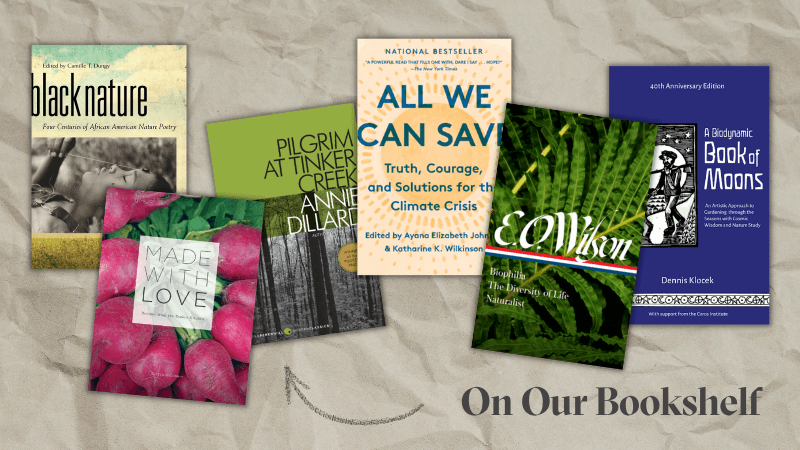
Greenery flourishes all around as summer continues into its third month. As the heat ripens our spirits, we're meditating on the earth and its lessons — on sustenance, survival, and growth. We're considering the natural world from different perspectives, in small intricate detail and also through the oft-overwhelming planetary big picture lens. Join us as we grow through the wisdom of poets, environmentalists, chefs, gardeners, and naturalists this August.
by Kerryn O’Connor
As a work scholar, Kerryn O’Connor was stunned by the care and devotion the kitchen here mixes, pours, and bakes into its daily culinary offerings. The “heart and soul of Esalen,” as she calls it, transmutes healthful ingredients into tasty delights for staff, faculty, and guests — while also supporting the transformation process for those who create these meals: “Like the seeds that are lovingly sewn, tended and harvested in Esalen’s farm & garden, we too experience growth that manifests for each other as love for each other and the meals we create.” With some mouthwatering photography and a wide range of recipes, O’Connor instructs readers on how to recreate some favorite Esalen dishes at home. “Even when hundreds or thousands of miles separate you from Big Sur, you can return through the memory of your senses.”
by Camille Dungy
Dungy, an award-winning author of both prose (Soil: The Story of a Black Mother’s Garden) and poetry (Trophic Cascade, Smith Blue, Suck on the Marrow, and What to Eat, What to Drink, What to Leave for Poison) brings together 180 poems from 93 poets for a dazzling range of perspectives in the first anthology of nature writing by Black American poets. Black Nature contains verses on the trauma of slavery, selections on the promise and survival found in the natural world, and 17 haunting syllables by Richard Wright, author of Native Son, who became obsessed with haiku in his final years. “Coming from the woods, A bull has a lilac sprig/Dangling from a horn” An invaluable edition that honors Black writers historically excluded from the canon of environmental poetry and, in doing so, powerfully engages with complicated questions the genre has sadly overlooked.
by Annie Dillard
Published almost fifty years ago, this Pulitzer-prize-winning landmark collection of nature essays documents a year in the Roanoke Valley in Virginia’s Blue Ridge mountains. Dillard sets out to see “what she could see” and produces profound contemplations on awareness, nature, and spirituality. The unnamed narrator (Dillard) marvels openly as she examines pond water under a microscope, analyzes the ridges of a leaf, and pontificates on life’s fascinating minutiae — all the insects, animals, fish caught in an endless fight for survival — wondering all the while about the Creator that imagined such wonders, violence, and beauty. Famously defying categorization, this American classic exemplifies the power of close observation and mindfulness that allows nature to be transformative.
by Ayana Elizabeth Johnson and Katharine K Wilkinson
For anyone trapped in a near-constant state of panic about the future of planet Earth, this title offers a precious resource often missing from climate change discourse: hope. This beautifully curated collection of essays by dozens of female thought leaders — “scientists, journalists, farmers, lawyers, teachers, activists, innovators, wonks, and designers, across generations, geographies, and race” — contains “heart-centered, not just head-centered” solutions to the crisis. Called a “feast of ideas and perspectives, setting a big table for the climate movement, declaring all are welcome,” this is a resource and a comfort for the weary as well as an escape from the existential paralysis so many of us feel. All We Can Save offers much-needed visions of possible salvations — with women as our guides along promising, though challenging, paths to the future.
by Dennis Klocek
This pioneering perspective explores the laws and activities of the cosmos to help readers work their gardens in harmony with the fundamental forces. This first book by artist, scientist, teacher, researcher, gardener, and alchemist Dennis Klocek is broken into four parts: an overview of the wholeness of gardening; a chapter on the alchemy of the Earth Logos and man’s relationship to the soil and plants; and two sections of verses, one for the interaction of earthly and cosmic phenomena within our gardens and another for the signs of the zodiac. An excellent starting point for anyone interested in the alchemy of biodynamics.
by Edward O. Wilson
One of the world’s greatest naturalists, conservationists, and science writers, the recently departed EO Wilson was dazzled by the multifariousness of life and terrified by this era’s man-made loss of biodiversity. He writes passionately here on both fronts, inspiring awe along with fear, though never in equal measure. The vast and mind-boggling variety of animals, plants, fungi, and microorganisms is key to our life-sustaining world, and no one describes that majestic interlocking dance as gracefully. Though he was always one of the most prominent voices warning about the imminent dangers humanity poses to the planet, he was still hopeful even a decade after the publication of this book. “I’m optimistic,” he said in 2012. “I think we can pass from conquerors to stewards.”
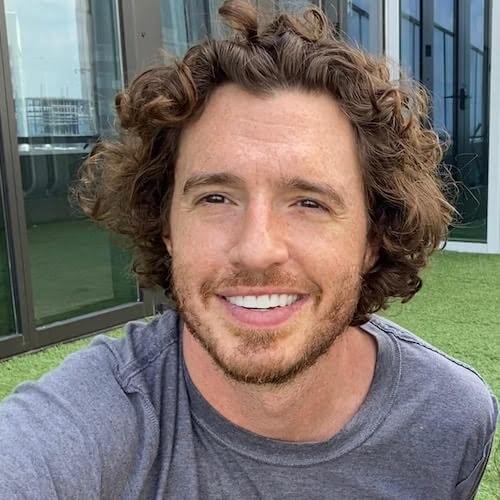
“Remembering to be as self compassionate as I can and praying to the divine that we're all a part of.”
–Aaron
“Prayer, reading, meditation, walking.”
–Karen
“Erratically — which is an ongoing stream of practice to find peace.”
–Charles
“Try on a daily basis to be kind to myself and to realize that making mistakes is a part of the human condition. Learning from our mistakes is a journey. But it starts with compassion and caring. First for oneself.”
–Steve
“Physically: aerobic exercise, volleyball, ice hockey, cycling, sailing. Emotionally: unfortunately I have to work to ‘not care’ about people or situations which may end painfully. Along the lines of ‘attachment is the source of suffering’, so best to avoid it or limit its scope. Sad though because it could also be the source of great joy. Is it worth the risk?“
–Rainer
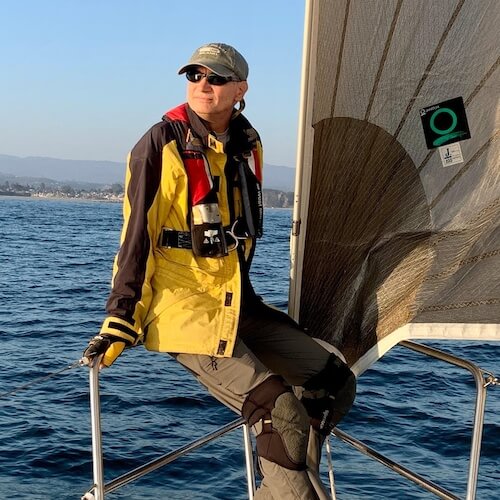

“It's time for my heart to be nurtured on one level yet contained on another. To go easy on me and to allow my feelings to be validated, not judged harshly. On the other hand, to let the heart rule with equanimity and not lead the mind and body around like a master.”
–Suzanne
“I spend time thinking of everything I am grateful for, and I try to develop my ability to express compassion for myself and others without reservation. I take time to do the things I need to do to keep myself healthy and happy. This includes taking experiential workshops, fostering relationships, and participating within groups which have a similar interest to become a more compassionate and fulfilled being.“
–Peter
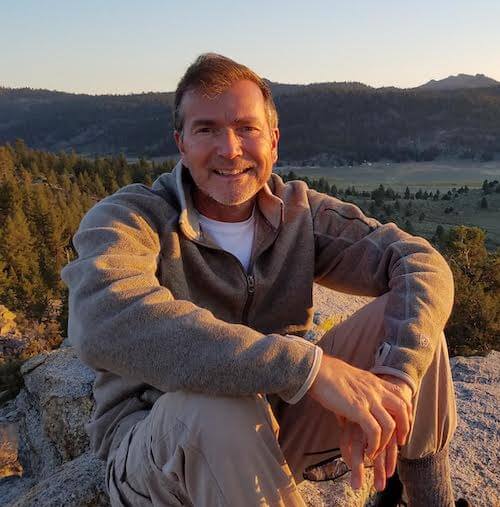
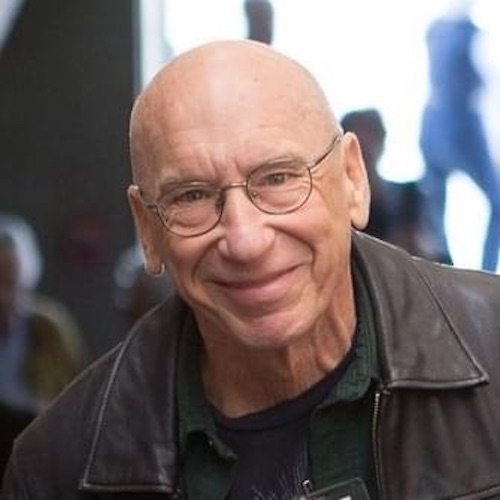
“Self-forgiveness for my own judgments. And oh yeah, coming to Esalen.”
–David B.
“Hmm, this is a tough one! I guess I take care of my heart through fostering relationships with people I feel connected to. Spending quality time with them (whether we're on the phone, through messages/letters, on Zoom, or in-person). Being there for them, listening to them, sharing what's going on with me, my struggles and my successes... like we do in the Esalen weekly Friends of Esalen Zoom sessions!”
–Lori

“I remind myself in many ways of the fact that " Love is all there is!" LOVE is the prize and this one precious life is the stage we get to learn our lessons. I get out into nature, hike, camp, river kayak, fly fish, garden, I create, I dance (not enough!), and I remain grateful for each day, each breath, each moment. Being in the moment, awake, and remembering the gift of life and my feeling of gratitude for all of creation.”
–Steven
“My physical heart by limiting stress and eating a heart-healthy diet. My emotional heart by staying in love with the world and by knowing that all disappointment and loss will pass.“
–David Z.
Today, September 29, is World Heart Day. Strike up a conversation with your own heart and as you feel comfortable, encourage others to do the same. As part of our own transformations and self-care, we sometimes ask for others to illuminate and enliven our hearts or speak our love language.
What if we could do this for ourselves too, even if just for today… or to start a heart practice, forever?
Steven Gutierrez is an editor, writer, and ghostwriter. He has worked in book publishing and at several major (and some minor) magazines.

Greenery flourishes all around as summer continues into its third month. As the heat ripens our spirits, we're meditating on the earth and its lessons — on sustenance, survival, and growth. We're considering the natural world from different perspectives, in small intricate detail and also through the oft-overwhelming planetary big picture lens. Join us as we grow through the wisdom of poets, environmentalists, chefs, gardeners, and naturalists this August.
by Kerryn O’Connor
As a work scholar, Kerryn O’Connor was stunned by the care and devotion the kitchen here mixes, pours, and bakes into its daily culinary offerings. The “heart and soul of Esalen,” as she calls it, transmutes healthful ingredients into tasty delights for staff, faculty, and guests — while also supporting the transformation process for those who create these meals: “Like the seeds that are lovingly sewn, tended and harvested in Esalen’s farm & garden, we too experience growth that manifests for each other as love for each other and the meals we create.” With some mouthwatering photography and a wide range of recipes, O’Connor instructs readers on how to recreate some favorite Esalen dishes at home. “Even when hundreds or thousands of miles separate you from Big Sur, you can return through the memory of your senses.”
by Camille Dungy
Dungy, an award-winning author of both prose (Soil: The Story of a Black Mother’s Garden) and poetry (Trophic Cascade, Smith Blue, Suck on the Marrow, and What to Eat, What to Drink, What to Leave for Poison) brings together 180 poems from 93 poets for a dazzling range of perspectives in the first anthology of nature writing by Black American poets. Black Nature contains verses on the trauma of slavery, selections on the promise and survival found in the natural world, and 17 haunting syllables by Richard Wright, author of Native Son, who became obsessed with haiku in his final years. “Coming from the woods, A bull has a lilac sprig/Dangling from a horn” An invaluable edition that honors Black writers historically excluded from the canon of environmental poetry and, in doing so, powerfully engages with complicated questions the genre has sadly overlooked.
by Annie Dillard
Published almost fifty years ago, this Pulitzer-prize-winning landmark collection of nature essays documents a year in the Roanoke Valley in Virginia’s Blue Ridge mountains. Dillard sets out to see “what she could see” and produces profound contemplations on awareness, nature, and spirituality. The unnamed narrator (Dillard) marvels openly as she examines pond water under a microscope, analyzes the ridges of a leaf, and pontificates on life’s fascinating minutiae — all the insects, animals, fish caught in an endless fight for survival — wondering all the while about the Creator that imagined such wonders, violence, and beauty. Famously defying categorization, this American classic exemplifies the power of close observation and mindfulness that allows nature to be transformative.
by Ayana Elizabeth Johnson and Katharine K Wilkinson
For anyone trapped in a near-constant state of panic about the future of planet Earth, this title offers a precious resource often missing from climate change discourse: hope. This beautifully curated collection of essays by dozens of female thought leaders — “scientists, journalists, farmers, lawyers, teachers, activists, innovators, wonks, and designers, across generations, geographies, and race” — contains “heart-centered, not just head-centered” solutions to the crisis. Called a “feast of ideas and perspectives, setting a big table for the climate movement, declaring all are welcome,” this is a resource and a comfort for the weary as well as an escape from the existential paralysis so many of us feel. All We Can Save offers much-needed visions of possible salvations — with women as our guides along promising, though challenging, paths to the future.
by Dennis Klocek
This pioneering perspective explores the laws and activities of the cosmos to help readers work their gardens in harmony with the fundamental forces. This first book by artist, scientist, teacher, researcher, gardener, and alchemist Dennis Klocek is broken into four parts: an overview of the wholeness of gardening; a chapter on the alchemy of the Earth Logos and man’s relationship to the soil and plants; and two sections of verses, one for the interaction of earthly and cosmic phenomena within our gardens and another for the signs of the zodiac. An excellent starting point for anyone interested in the alchemy of biodynamics.
by Edward O. Wilson
One of the world’s greatest naturalists, conservationists, and science writers, the recently departed EO Wilson was dazzled by the multifariousness of life and terrified by this era’s man-made loss of biodiversity. He writes passionately here on both fronts, inspiring awe along with fear, though never in equal measure. The vast and mind-boggling variety of animals, plants, fungi, and microorganisms is key to our life-sustaining world, and no one describes that majestic interlocking dance as gracefully. Though he was always one of the most prominent voices warning about the imminent dangers humanity poses to the planet, he was still hopeful even a decade after the publication of this book. “I’m optimistic,” he said in 2012. “I think we can pass from conquerors to stewards.”

“Remembering to be as self compassionate as I can and praying to the divine that we're all a part of.”
–Aaron
“Prayer, reading, meditation, walking.”
–Karen
“Erratically — which is an ongoing stream of practice to find peace.”
–Charles
“Try on a daily basis to be kind to myself and to realize that making mistakes is a part of the human condition. Learning from our mistakes is a journey. But it starts with compassion and caring. First for oneself.”
–Steve
“Physically: aerobic exercise, volleyball, ice hockey, cycling, sailing. Emotionally: unfortunately I have to work to ‘not care’ about people or situations which may end painfully. Along the lines of ‘attachment is the source of suffering’, so best to avoid it or limit its scope. Sad though because it could also be the source of great joy. Is it worth the risk?“
–Rainer


“It's time for my heart to be nurtured on one level yet contained on another. To go easy on me and to allow my feelings to be validated, not judged harshly. On the other hand, to let the heart rule with equanimity and not lead the mind and body around like a master.”
–Suzanne
“I spend time thinking of everything I am grateful for, and I try to develop my ability to express compassion for myself and others without reservation. I take time to do the things I need to do to keep myself healthy and happy. This includes taking experiential workshops, fostering relationships, and participating within groups which have a similar interest to become a more compassionate and fulfilled being.“
–Peter


“Self-forgiveness for my own judgments. And oh yeah, coming to Esalen.”
–David B.
“Hmm, this is a tough one! I guess I take care of my heart through fostering relationships with people I feel connected to. Spending quality time with them (whether we're on the phone, through messages/letters, on Zoom, or in-person). Being there for them, listening to them, sharing what's going on with me, my struggles and my successes... like we do in the Esalen weekly Friends of Esalen Zoom sessions!”
–Lori

“I remind myself in many ways of the fact that " Love is all there is!" LOVE is the prize and this one precious life is the stage we get to learn our lessons. I get out into nature, hike, camp, river kayak, fly fish, garden, I create, I dance (not enough!), and I remain grateful for each day, each breath, each moment. Being in the moment, awake, and remembering the gift of life and my feeling of gratitude for all of creation.”
–Steven
“My physical heart by limiting stress and eating a heart-healthy diet. My emotional heart by staying in love with the world and by knowing that all disappointment and loss will pass.“
–David Z.
Today, September 29, is World Heart Day. Strike up a conversation with your own heart and as you feel comfortable, encourage others to do the same. As part of our own transformations and self-care, we sometimes ask for others to illuminate and enliven our hearts or speak our love language.
What if we could do this for ourselves too, even if just for today… or to start a heart practice, forever?

Greenery flourishes all around as summer continues into its third month. As the heat ripens our spirits, we're meditating on the earth and its lessons — on sustenance, survival, and growth. We're considering the natural world from different perspectives, in small intricate detail and also through the oft-overwhelming planetary big picture lens. Join us as we grow through the wisdom of poets, environmentalists, chefs, gardeners, and naturalists this August.
by Kerryn O’Connor
As a work scholar, Kerryn O’Connor was stunned by the care and devotion the kitchen here mixes, pours, and bakes into its daily culinary offerings. The “heart and soul of Esalen,” as she calls it, transmutes healthful ingredients into tasty delights for staff, faculty, and guests — while also supporting the transformation process for those who create these meals: “Like the seeds that are lovingly sewn, tended and harvested in Esalen’s farm & garden, we too experience growth that manifests for each other as love for each other and the meals we create.” With some mouthwatering photography and a wide range of recipes, O’Connor instructs readers on how to recreate some favorite Esalen dishes at home. “Even when hundreds or thousands of miles separate you from Big Sur, you can return through the memory of your senses.”
by Camille Dungy
Dungy, an award-winning author of both prose (Soil: The Story of a Black Mother’s Garden) and poetry (Trophic Cascade, Smith Blue, Suck on the Marrow, and What to Eat, What to Drink, What to Leave for Poison) brings together 180 poems from 93 poets for a dazzling range of perspectives in the first anthology of nature writing by Black American poets. Black Nature contains verses on the trauma of slavery, selections on the promise and survival found in the natural world, and 17 haunting syllables by Richard Wright, author of Native Son, who became obsessed with haiku in his final years. “Coming from the woods, A bull has a lilac sprig/Dangling from a horn” An invaluable edition that honors Black writers historically excluded from the canon of environmental poetry and, in doing so, powerfully engages with complicated questions the genre has sadly overlooked.
by Annie Dillard
Published almost fifty years ago, this Pulitzer-prize-winning landmark collection of nature essays documents a year in the Roanoke Valley in Virginia’s Blue Ridge mountains. Dillard sets out to see “what she could see” and produces profound contemplations on awareness, nature, and spirituality. The unnamed narrator (Dillard) marvels openly as she examines pond water under a microscope, analyzes the ridges of a leaf, and pontificates on life’s fascinating minutiae — all the insects, animals, fish caught in an endless fight for survival — wondering all the while about the Creator that imagined such wonders, violence, and beauty. Famously defying categorization, this American classic exemplifies the power of close observation and mindfulness that allows nature to be transformative.
by Ayana Elizabeth Johnson and Katharine K Wilkinson
For anyone trapped in a near-constant state of panic about the future of planet Earth, this title offers a precious resource often missing from climate change discourse: hope. This beautifully curated collection of essays by dozens of female thought leaders — “scientists, journalists, farmers, lawyers, teachers, activists, innovators, wonks, and designers, across generations, geographies, and race” — contains “heart-centered, not just head-centered” solutions to the crisis. Called a “feast of ideas and perspectives, setting a big table for the climate movement, declaring all are welcome,” this is a resource and a comfort for the weary as well as an escape from the existential paralysis so many of us feel. All We Can Save offers much-needed visions of possible salvations — with women as our guides along promising, though challenging, paths to the future.
by Dennis Klocek
This pioneering perspective explores the laws and activities of the cosmos to help readers work their gardens in harmony with the fundamental forces. This first book by artist, scientist, teacher, researcher, gardener, and alchemist Dennis Klocek is broken into four parts: an overview of the wholeness of gardening; a chapter on the alchemy of the Earth Logos and man’s relationship to the soil and plants; and two sections of verses, one for the interaction of earthly and cosmic phenomena within our gardens and another for the signs of the zodiac. An excellent starting point for anyone interested in the alchemy of biodynamics.
by Edward O. Wilson
One of the world’s greatest naturalists, conservationists, and science writers, the recently departed EO Wilson was dazzled by the multifariousness of life and terrified by this era’s man-made loss of biodiversity. He writes passionately here on both fronts, inspiring awe along with fear, though never in equal measure. The vast and mind-boggling variety of animals, plants, fungi, and microorganisms is key to our life-sustaining world, and no one describes that majestic interlocking dance as gracefully. Though he was always one of the most prominent voices warning about the imminent dangers humanity poses to the planet, he was still hopeful even a decade after the publication of this book. “I’m optimistic,” he said in 2012. “I think we can pass from conquerors to stewards.”

“Remembering to be as self compassionate as I can and praying to the divine that we're all a part of.”
–Aaron
“Prayer, reading, meditation, walking.”
–Karen
“Erratically — which is an ongoing stream of practice to find peace.”
–Charles
“Try on a daily basis to be kind to myself and to realize that making mistakes is a part of the human condition. Learning from our mistakes is a journey. But it starts with compassion and caring. First for oneself.”
–Steve
“Physically: aerobic exercise, volleyball, ice hockey, cycling, sailing. Emotionally: unfortunately I have to work to ‘not care’ about people or situations which may end painfully. Along the lines of ‘attachment is the source of suffering’, so best to avoid it or limit its scope. Sad though because it could also be the source of great joy. Is it worth the risk?“
–Rainer


“It's time for my heart to be nurtured on one level yet contained on another. To go easy on me and to allow my feelings to be validated, not judged harshly. On the other hand, to let the heart rule with equanimity and not lead the mind and body around like a master.”
–Suzanne
“I spend time thinking of everything I am grateful for, and I try to develop my ability to express compassion for myself and others without reservation. I take time to do the things I need to do to keep myself healthy and happy. This includes taking experiential workshops, fostering relationships, and participating within groups which have a similar interest to become a more compassionate and fulfilled being.“
–Peter


“Self-forgiveness for my own judgments. And oh yeah, coming to Esalen.”
–David B.
“Hmm, this is a tough one! I guess I take care of my heart through fostering relationships with people I feel connected to. Spending quality time with them (whether we're on the phone, through messages/letters, on Zoom, or in-person). Being there for them, listening to them, sharing what's going on with me, my struggles and my successes... like we do in the Esalen weekly Friends of Esalen Zoom sessions!”
–Lori

“I remind myself in many ways of the fact that " Love is all there is!" LOVE is the prize and this one precious life is the stage we get to learn our lessons. I get out into nature, hike, camp, river kayak, fly fish, garden, I create, I dance (not enough!), and I remain grateful for each day, each breath, each moment. Being in the moment, awake, and remembering the gift of life and my feeling of gratitude for all of creation.”
–Steven
“My physical heart by limiting stress and eating a heart-healthy diet. My emotional heart by staying in love with the world and by knowing that all disappointment and loss will pass.“
–David Z.
Today, September 29, is World Heart Day. Strike up a conversation with your own heart and as you feel comfortable, encourage others to do the same. As part of our own transformations and self-care, we sometimes ask for others to illuminate and enliven our hearts or speak our love language.
What if we could do this for ourselves too, even if just for today… or to start a heart practice, forever?
Steven Gutierrez is an editor, writer, and ghostwriter. He has worked in book publishing and at several major (and some minor) magazines.